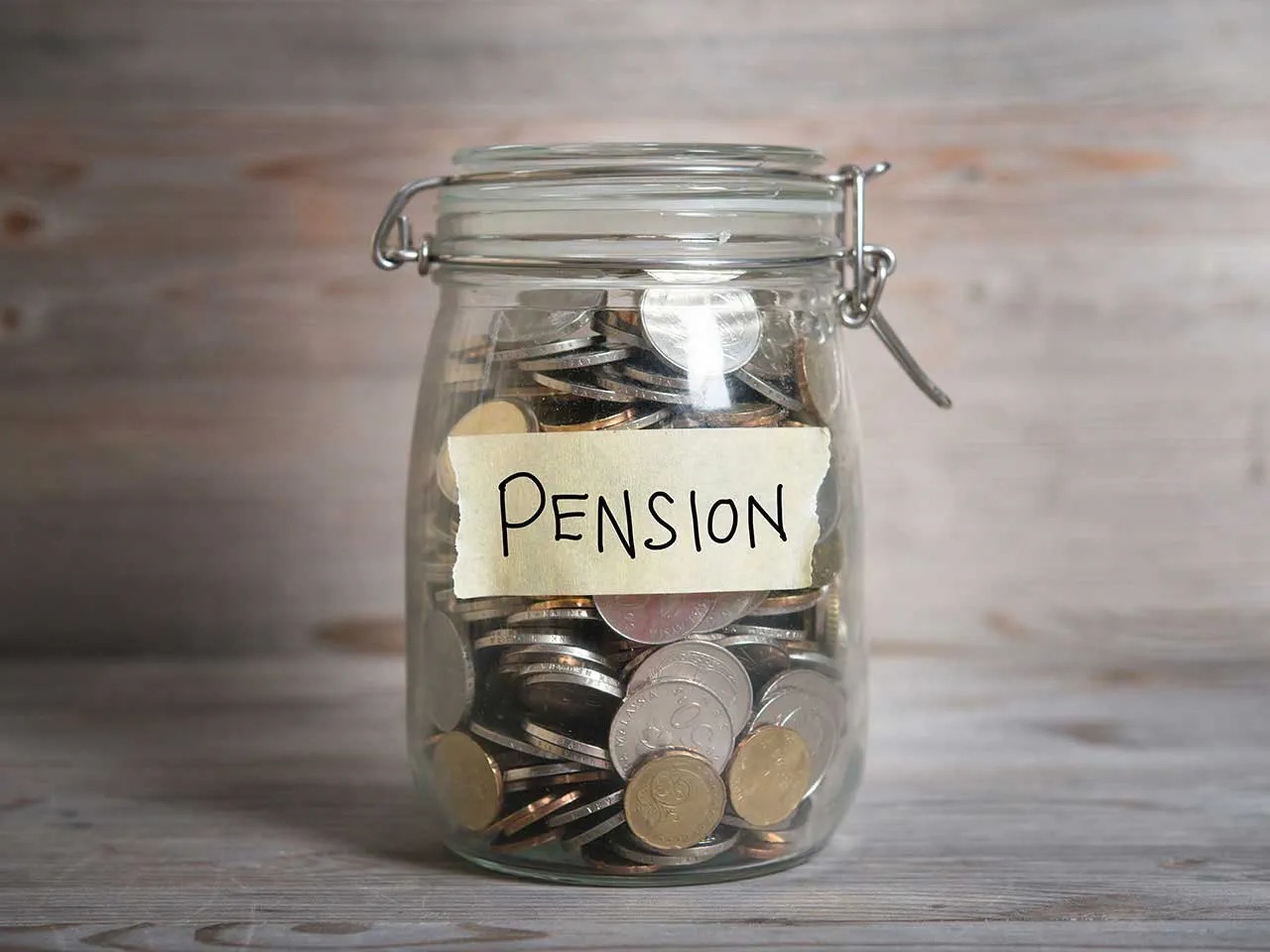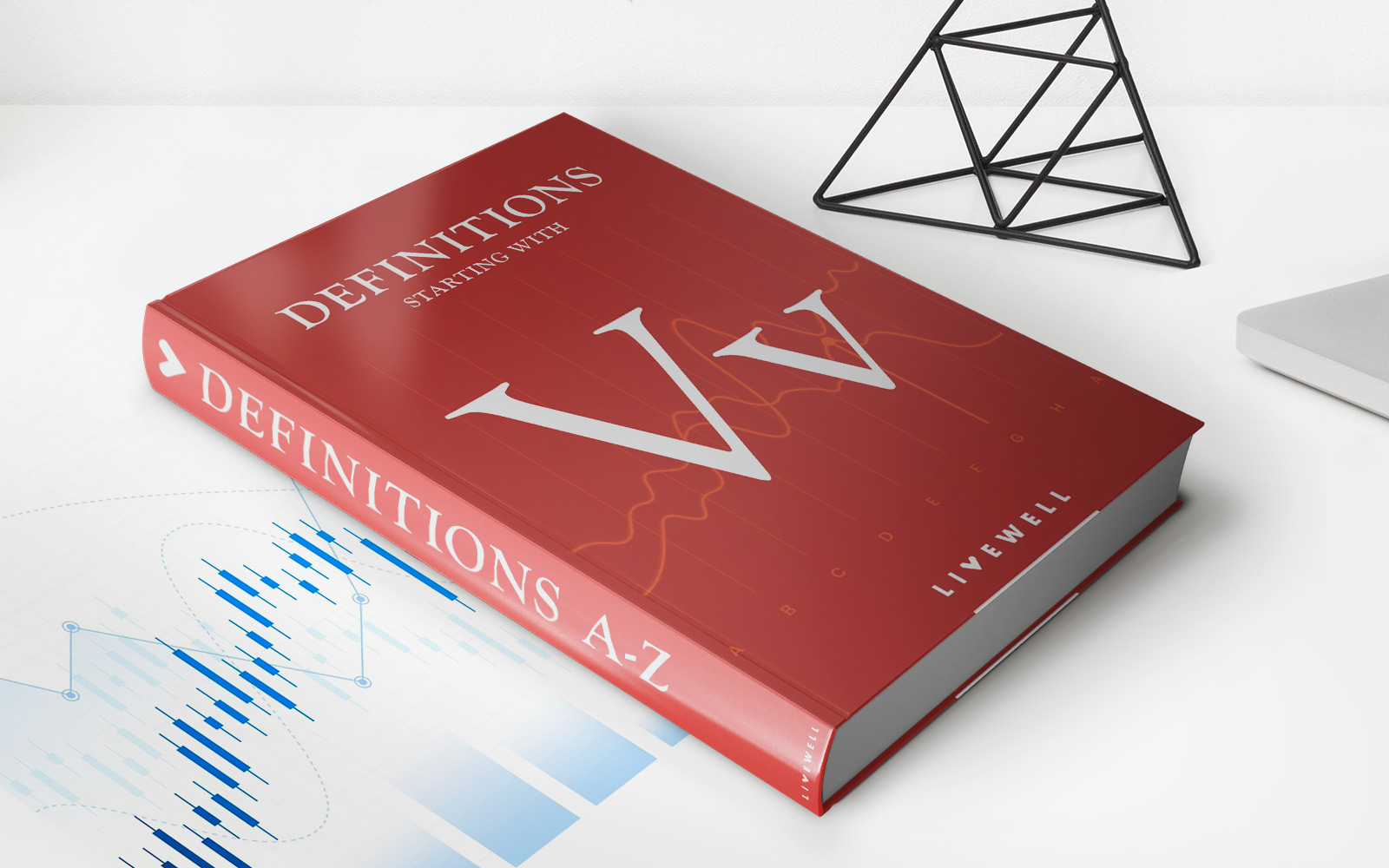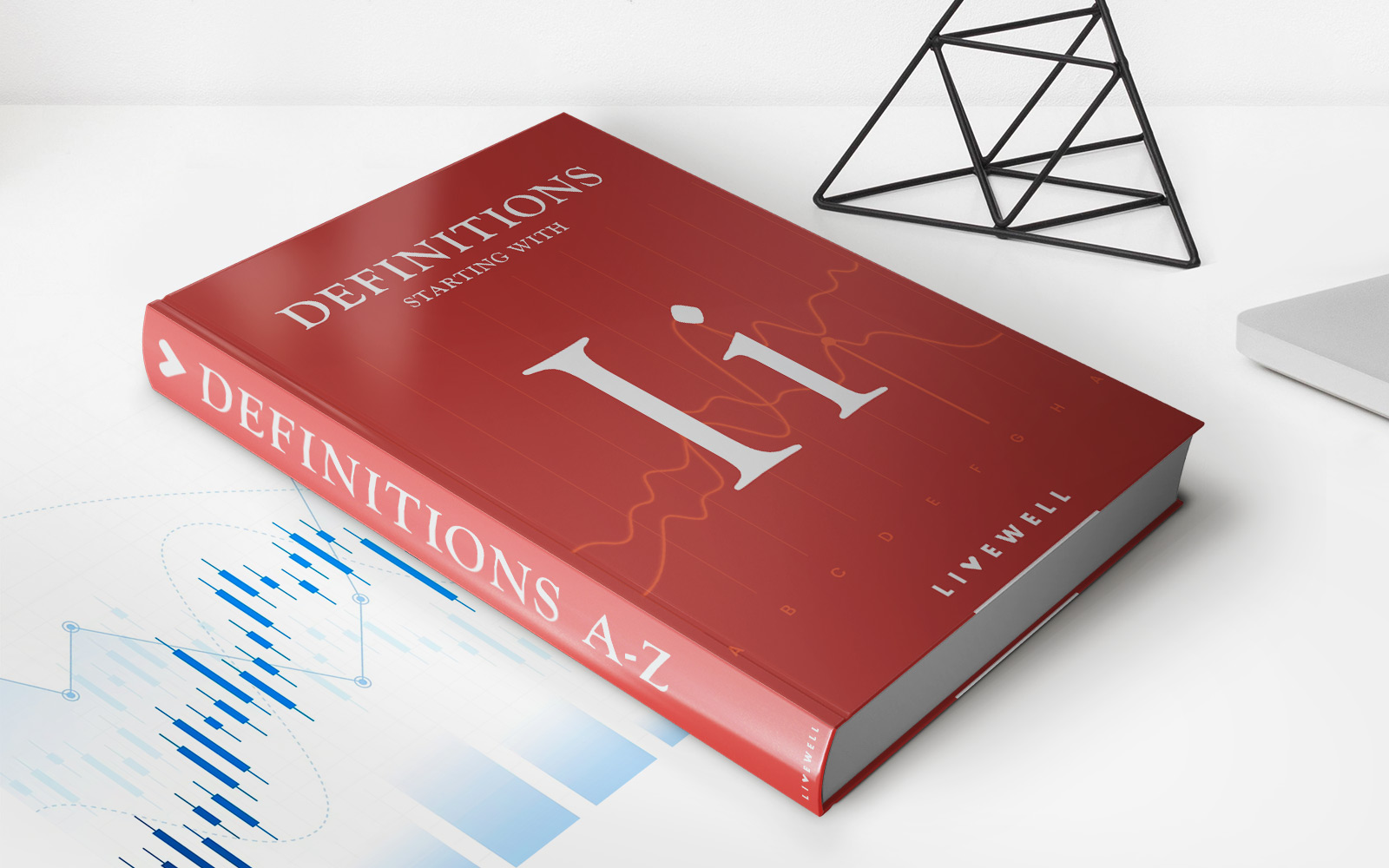

Finance
What Stocks Do Well In Stagflation
Published: January 19, 2024
Discover which finance stocks perform well during times of stagflation and how to capitalize on this investment opportunity.
(Many of the links in this article redirect to a specific reviewed product. Your purchase of these products through affiliate links helps to generate commission for LiveWell, at no extra cost. Learn more)
Table of Contents
- Introduction
- Definition of Stagflation
- Impact of Stagflation on Stock Market
- Characteristics of Stocks that Perform Well in Stagflation
- Types of Industries and Sectors to Consider
- Examples of Stocks that Thrive in Stagflation
- Strategies for Investing in Stagflation
- Risks and Challenges of Investing in Stagflation
- Conclusion
Introduction
In the world of finance, investors are always seeking to navigate through various economic conditions to maximize their returns. One such challenging economic scenario is stagflation. Stagflation, a portmanteau of stagnation and inflation, refers to a period of stagnant economic growth combined with high inflation, creating a complex and volatile landscape for investors.
Unlike traditional economic cycles, where inflation corresponds with robust economic growth, stagflation presents a unique set of challenges. During such periods, investors must adopt a different approach to protect their portfolios and identify opportunities that can thrive in this challenging environment.
In this article, we will delve into the concept of stagflation and its impact on the stock market. We will explore the characteristics of stocks that have historically performed well during stagflation and discuss the industries and sectors that investors should consider. Additionally, we will provide examples of specific stocks that have thrived in past stagflationary periods and outline strategies for investing in this economic climate.
It is essential to note that stagflation is a relatively rare phenomenon, occurring when a combination of factors, such as supply shocks and restrictive monetary policies, disrupts the normal pattern of economic growth. As a result, the strategies discussed in this article are aimed at investors who are specifically looking to navigate through these challenging times and should not be considered as general investment advice for all market conditions.
Let us now dive into the world of stagflation, understanding its implications on the stock market and uncovering the stocks that have historically weathered this economic storm.
Definition of Stagflation
Stagflation is a term used to describe an economic scenario characterized by a stagnant or sluggish economy coupled with high inflation rates. It presents a challenging situation for policymakers and investors alike as it defies the traditional relationship between growth and inflation.
Conventionally, inflation is expected to occur during periods of economic expansion. This is because as demand for goods and services increases, prices tend to rise. However, in stagflation, prices continue to rise without a corresponding increase in economic output. This can be attributed to a variety of factors, including supply-side shocks, high unemployment rates, and tight monetary policies.
One of the key drivers of stagflation is a supply-side shock. This occurs when there is a sudden disruption in the supply of critical inputs, such as energy or raw materials. For example, an oil price shock, such as the one experienced during the 1970s, can significantly increase production costs, leading to higher prices for goods and services.
In addition to supply-side shocks, high unemployment rates also contribute to stagflation. During periods of stagnation, many businesses operate below their capacity and are hesitant to hire new employees. This results in a lack of job opportunities and higher unemployment rates, further exacerbating the economic slowdown.
Furthermore, tight monetary policies can also contribute to stagflation. Central banks often adopt restrictive monetary measures, such as raising interest rates, to combat inflation. However, these measures can also dampen economic growth, leading to a stagnant economy.
In summary, stagflation is characterized by a combination of stagnant economic growth, high inflation rates, supply-side shocks, high unemployment rates, and tight monetary policies. Understanding these factors is crucial for investors seeking to navigate through this challenging economic environment.
Impact of Stagflation on Stock Market
Stagflation can have a significant impact on the stock market, creating a challenging environment for investors. Understanding how this economic phenomenon affects various aspects of the stock market is vital for making informed investment decisions.
One of the primary effects of stagflation on the stock market is increased volatility. Stagnant economic growth and high inflation rates create uncertainty and unpredictability in the market. Investors become more cautious and tend to react swiftly to changes in economic indicators and company performance. This heightened volatility can result in sharp price fluctuations and make stock selection and timing more challenging.
As high inflation erodes purchasing power, investors often seek to protect their wealth by investing in assets that can offer a hedge against inflation. However, not all stocks perform well in inflationary periods. In fact, stagflation tends to have a negative impact on many stocks, particularly those in sectors heavily dependent on consumer discretionary spending. Companies that rely on strong consumer demand may struggle as consumers cut back on non-essential purchases due to the rising cost of living.
On the other hand, certain sectors and industries have historically performed relatively well during stagflation. These include defensive sectors such as healthcare, utilities, and consumer staples. Healthcare providers and pharmaceutical companies tend to be more resilient in stagflationary periods, as the demand for healthcare services remains relatively stable. Utilities, which provide essential services such as electricity and water, also tend to fare better in such environments, as their revenue streams are considered more consistent.
Moreover, during stagflation, consumer staples companies, which produce everyday essentials such as food, beverages, and personal care products, tend to be more resilient. Consumers may be more inclined to prioritize purchasing these necessary items over non-essential goods, making these stocks more attractive.
Additionally, natural resource companies, such as those involved in the production of oil, gas, and precious metals, can benefit from stagflation. These companies often see increased prices for their commodities during inflationary periods. However, it’s important to note that their performance may be influenced by other factors as well, such as global supply and demand dynamics.
In summary, stagflation can lead to increased volatility in the stock market and negatively impact certain sectors while favoring others. Understanding these dynamics is crucial for investors to adjust their portfolios and identify potential opportunities amidst the challenges presented by stagflation.
Characteristics of Stocks that Perform Well in Stagflation
While stagflation creates a challenging environment for the stock market, there are certain characteristics that have historically been associated with stocks that perform well during these periods. Understanding these characteristics can help investors identify potential opportunities and adjust their portfolios accordingly.
1. Defensive Qualities: Stocks with defensive qualities tend to perform relatively well in stagflationary environments. These are companies that offer products or services that are considered essential, regardless of the economic conditions. Defensive sectors such as healthcare, utilities, and consumer staples often fall into this category. The demand for healthcare services, basic utilities, and everyday essentials tends to remain stable even during periods of stagnant growth and high inflation.
2. Pricing Power: Companies with strong pricing power can often mitigate the impact of inflation by passing on higher input costs to consumers. These companies have the ability to maintain or increase their product prices in response to inflationary pressures. Their ability to generate revenue and maintain profit margins in the face of rising costs makes them more desirable in stagflationary periods.
3. Global Exposure: Companies with significant global exposure may fare better in stagflationary environments. This is because stagflation is often associated with specific regions or economies. By diversifying their revenue streams across different markets, these companies can offset the negative effects of stagflation in one region with positive performance in another.
4. Strong Cash Flow and Balance Sheet: Companies with strong cash flow and healthy balance sheets are better equipped to navigate through challenging economic environments. They have the financial flexibility to invest in growth opportunities, weather economic downturns, and withstand inflationary pressures. These companies can also take advantage of distressed assets or acquisition opportunities that may arise during stagflation.
5. Dividend Payments: Companies that consistently pay dividends and have a history of increasing their dividend payouts tend to be attractive during stagflationary periods. Dividends provide a steady income stream for investors, which can help counteract the erosive effects of inflation on purchasing power. Additionally, companies that prioritize dividend payments often exhibit stable cash flows and a commitment to shareholder value.
It is important to note that while these characteristics have historically been associated with stocks that perform well during stagflation, there are no guarantees of future performance. Each stagflationary period is unique, and economic dynamics can evolve over time. Therefore, thorough research, analysis, and diversification are crucial when considering investments in the stock market during stagflation.
Types of Industries and Sectors to Consider
When navigating through stagflation, investors should consider certain industries and sectors that have historically shown resilience or even performed well during these challenging economic periods. While past performance does not guarantee future results, understanding the characteristics of these industries can guide investors in identifying potential opportunities.
1. Healthcare: Healthcare is a defensive sector that tends to be relatively immune to economic downturns and fluctuations. Regardless of the economic conditions, the demand for healthcare services and products remains relatively stable. Companies involved in pharmaceuticals, biotechnology, and healthcare providers may be attractive investments during stagflation.
2. Utilities: The utilities sector provides essential services such as electricity, water, and natural gas. These services are considered necessities, making utility companies relatively immune to economic stagnation. Additionally, utilities often have stable cash flows and predictable revenue streams, making them an appealing option during stagflation.
3. Consumer Staples: Consumer staples refer to products that are essential for everyday life, such as food, beverages, personal care items, and household products. During stagflation, consumers tend to prioritize spending on these essential items, even as discretionary spending decreases. Companies that manufacture or distribute consumer staples products may provide stability and potential growth opportunities during stagflation.
4. Energy and Natural Resources: Companies in the energy and natural resources sector can benefit from stagflation due to the potential for increased commodity prices. Inflationary pressures often drive up the prices of commodities such as oil, gas, and precious metals. Investors may consider companies involved in exploration, production, refining, or distribution of these commodities, as they may experience increased revenue and profitability during stagflation.
5. Infrastructure: Infrastructure companies involved in construction, engineering, and project development may be attractive investments during stagflation. Governments often invest in infrastructure projects during economic downturns to stimulate growth and create jobs. These companies can benefit from government spending and increased infrastructure investments, potentially providing stable returns during stagflation.
6. Real Estate: Real estate can be an interesting sector to consider during stagflation. While stagnant economic growth may limit the overall demand for real estate, inflation can drive up property values and rental prices. Investing in real estate investment trusts (REITs) or companies involved in residential or commercial property development and management, particularly in regions with strong market fundamentals, may present opportunities during stagflation.
It is important to note that while these industries and sectors have shown relative resilience or potential during stagflation, diversification and thorough analysis remain crucial. Investors should consider each company’s specific financial health, competitive position, and management strategies. Moreover, staying updated on economic indicators, policy changes, and market trends can help identify emerging opportunities and risks.
Examples of Stocks that Thrive in Stagflation
While past performance is not indicative of future results, examining historical examples can provide insight into stocks that have thrived during stagflationary periods. Here are a few examples of stocks that have shown resilience or performed well in the past:
1. Johnson & Johnson (JNJ): As a global pharmaceutical and healthcare company, Johnson & Johnson has a strong foothold in the defensive healthcare sector. The demand for healthcare products and services tends to remain steady even during economic downturns, making JNJ an appealing choice. Additionally, the company has a diversified product portfolio and a history of consistent dividend payments, making it an attractive option for income-focused investors during stagflation.
2. Procter & Gamble (PG): Known for its wide range of consumer goods, Procter & Gamble is a prominent player in the consumer staples sector. Stagflation tends to increase the preference for essential items, and companies like PG, which produce household products, personal care items, and food products, may benefit. Procter & Gamble also has a long history of strong brand recognition, global presence, and stable cash flows, which can be advantageous during stagnant economic periods.
3. NextEra Energy (NEE): As one of the largest renewable energy companies in the United States, NextEra Energy operates in the utilities sector. Stagflation can increase the demand for essential services such as electricity, and companies like NEE may benefit. Additionally, NextEra Energy has been investing heavily in renewable energy projects, positioning itself well for the growing demand for clean energy solutions in the face of increasing environmental concerns.
4. Chevron Corporation (CVX): Oil and gas companies can potentially benefit from stagflation due to increased commodity prices. Chevron Corporation, one of the world’s largest integrated energy companies, operates in various segments of the energy industry. During past stagflationary periods, energy companies like CVX have experienced increased revenues and profitability. However, it is important to consider other factors, such as global supply and demand dynamics, when evaluating energy stocks as investments.
5. Realty Income Corporation (O): Realty Income is a real estate investment trust (REIT) that specializes in retail properties. While stagflation can lead to stagnant economic growth, inflationary pressures can drive up property values and rental prices. REITs like Realty Income, with a portfolio of diverse properties and long-term lease agreements, may perform well during stagflation as they generate regular income through rental payments.
It is crucial to emphasize that while these examples have shown resilience or performed well during stagflationary periods in the past, thorough research and analysis are necessary before making investment decisions. Investors should consider each company’s financial health, competitive position, and industry trends to determine their suitability for current and future stagflationary conditions.
Strategies for Investing in Stagflation
Investing during stagflation requires a different approach compared to more traditional economic cycles. Here are some strategies to consider when navigating through this challenging economic environment:
1. Diversify Your Portfolio: Diversification is crucial in stagflation as it allows you to spread risk across different asset classes and industries. Consider including defensive sectors like healthcare and utilities, as well as industries that may benefit from stagflation, such as energy and infrastructure. Diversification helps mitigate the impact of any potential downturn in a specific sector or industry.
2. Focus on Defensive Stocks: Defensive stocks, such as those in healthcare, utilities, and consumer staples, can provide a level of stability during stagflation. These sectors tend to be less impacted by economic slowdowns and can offer consistent dividend payments. Look for companies with strong balance sheets, stable cash flows, and proven track records of navigating through challenging economic environments.
3. Consider Inflation-Protected Assets: Stagflation typically comes with rising inflation rates, which erode the purchasing power of traditional assets. Consider including inflation-protected assets in your portfolio, such as Treasury Inflation-Protected Securities (TIPS) or commodities, which can help offset the effects of inflation and preserve your wealth.
4. Focus on Quality Companies: In volatile economic environments, it’s important to invest in quality companies with strong fundamentals. Look for companies with a history of stable revenue growth, solid management teams, and competitive advantages. These companies are more likely to navigate through stagflation successfully and provide long-term value to investors.
5. Stay Informed: Keep a close eye on economic indicators, such as inflation rates, unemployment figures, and policy changes. Monitor the news and market trends to stay updated on developments that can impact stagflation and specific industries. This will help you make informed decisions and adjust your investment strategy accordingly.
6. Seek Professional Advice: Stagflation can be a complex and challenging economic environment to navigate. Consider seeking advice from financial professionals who have experience in managing investments during stagflationary periods. They can provide valuable insights, personalized strategies, and guidance tailored to your specific investment goals and risk tolerance.
Remember, there is no one-size-fits-all strategy for investing in stagflation. Each investor’s risk tolerance, financial goals, and time horizon differ. It’s important to evaluate your own circumstances and consult with financial professionals to develop a customized plan that suits your needs.
Risks and Challenges of Investing in Stagflation
Investing in stagflation comes with its own set of risks and challenges that investors should be aware of. Understanding these risks is essential for making informed investment decisions. Here are some of the key risks and challenges associated with investing in a stagflationary environment:
1. Volatility: Stagflation is often characterized by increased market volatility. Economic uncertainty, unpredictable inflation rates, and slower economic growth can lead to significant fluctuations in stock prices. Investors should be prepared for heightened market volatility and the potential for sharp price movements in their investment portfolios.
2. Economic Slowdown: Stagflation occurs during periods of sluggish economic growth, which can impact corporate earnings and profitability. Companies may face challenges in generating revenue growth and maintaining profit margins. This can lead to lower stock valuations and reduced investor confidence, making it challenging to identify stocks that can outperform in this environment.
3. Inflationary Pressures: Stagflation is characterized by high levels of inflation, which erodes the purchasing power of consumers and investors. Investors need to be cautious as their investment returns may not keep up with the rising cost of goods and services. Inflation can also result in higher input costs for businesses, potentially squeezing profit margins.
4. Interest Rate Risk: Stagflation often leads to central banks adopting tight monetary policies to combat inflation. This can result in higher interest rates, making borrowing more expensive for businesses and consumers. Higher borrowing costs can negatively impact consumer spending, business investment, and overall economic activity, which can subsequently affect corporate earnings and stock performance.
5. Sector-Specific Risks: Some sectors may be more vulnerable to stagflation than others. Industries heavily reliant on discretionary consumer spending, such as luxury goods or travel and tourism, may experience significant challenges during periods of stagnant growth and rising prices. It’s crucial for investors to carefully assess the potential risks associated with specific sectors and industries when constructing their portfolios.
6. Regulatory and Policy Changes: Stagflation may prompt governments to implement new regulations or policy changes to address economic challenges. These changes can impact specific industries, companies, and their respective stock prices. Investors should stay updated on regulatory developments and be prepared to adjust their investment strategies accordingly.
7. Limited Investment Options: Stagflation can limit the number of investment options available. Not all stocks or asset classes perform well during stagflationary periods, which can make it challenging to find suitable investment opportunities that can generate reasonable returns. Investors need to undertake thorough research and select investments with the potential to weather the stagflation storm.
It’s important for investors to approach stagflationary environments with a cautious and diversified investment strategy. Thorough analysis, risk assessment, and regular portfolio monitoring are essential to navigate through the specific risks and challenges associated with investing during stagflation.
Conclusion
Investing in stagflation requires careful consideration and a tailored approach to navigate the unique challenges posed by this economic phenomenon. While stagflation can bring volatility and uncertainty to the stock market, there are strategies and opportunities that investors can explore.
Understanding the characteristics of stocks that have historically performed well in stagflation, such as defensive qualities, pricing power, and global exposure, can guide investors in selecting suitable investments. Industries like healthcare, utilities, and consumer staples have shown resilience in past stagflationary periods.
Investors must also be mindful of the risks and challenges associated with stagflation. Volatility, economic slowdown, inflationary pressures, interest rate risk, sector-specific risks, and policy changes are among the factors that can impact investment performance during stagflation. Diligent research, diversification, and staying informed about economic indicators and market trends are crucial for mitigating these risks and challenges.
As with any investment strategy, there are no guarantees of success. Past performance does not guarantee future results, and individual circumstances and preferences vary. It is advisable to consult with financial professionals, evaluate personal risk tolerance, and develop a well-diversified investment plan that aligns with one’s long-term goals.
Stagflation presents a unique set of circumstances for investors, requiring a thoughtful and adaptable approach. By understanding the dynamics of stagflation, identifying industries and sectors that historically thrive in this environment, and implementing strategies to mitigate risks, investors can position themselves to potentially capitalize on opportunities while navigating the challenges of stagflation effectively.














